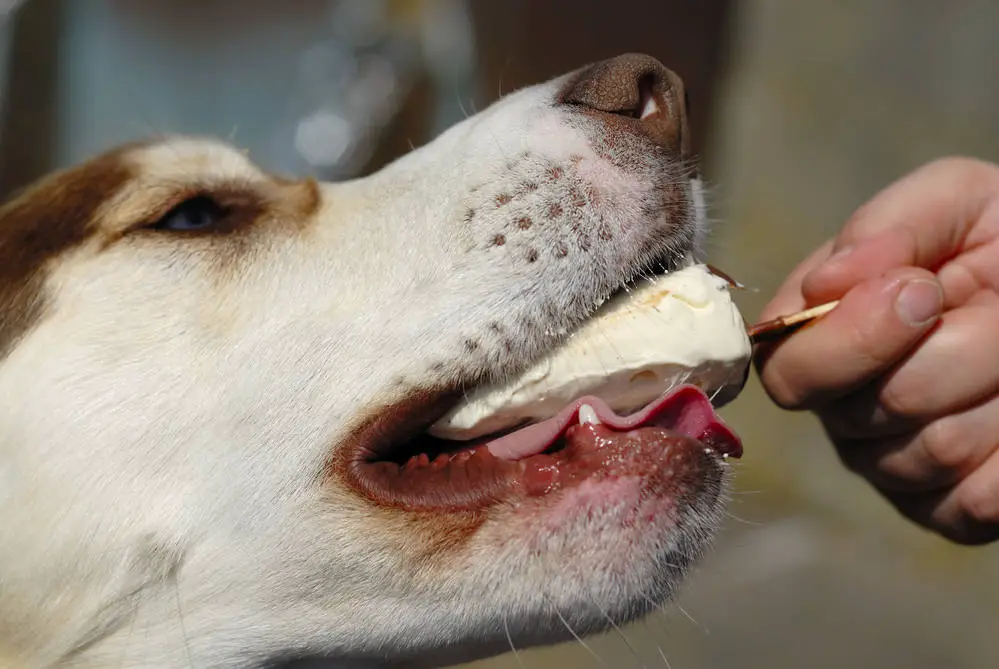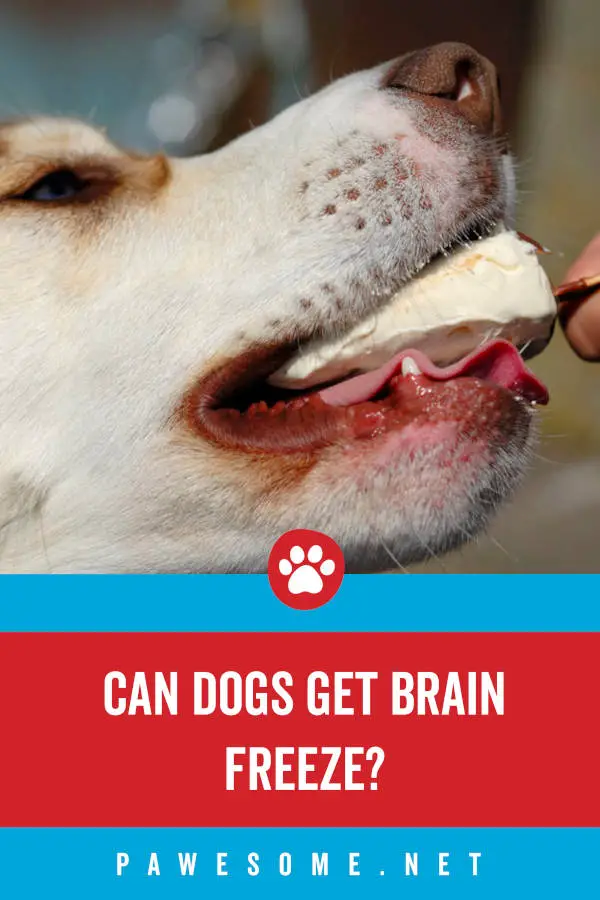 Summer is here and the temptation to pound an ice cream is almost irresistible. But we know that too much greed and gulping giant scoops of this delicious dessert can lead to…you said it: a brain freeze.
Summer is here and the temptation to pound an ice cream is almost irresistible. But we know that too much greed and gulping giant scoops of this delicious dessert can lead to…you said it: a brain freeze.
This happens with dogs and cats too. Well, more or less. In fact, if you remember, there was a phase where dog brain freeze videos were quite the rage.
But let’s take a minute to see if that’s funny or painful to our canine pals. And if brain freeze in dogs is a scientific fact.
How It Works
Also commonly referred to as an ice cream headache, the scientific name of a brain freeze is sphenopalatine ganglion neuralgia meaning pain of the sphenopalatine nerve. It is a short term nerve pain caused by consuming cold liquids or solidly rapidly and this is how it plays out.
The capillaries of the sinuses cool rapidly resulting in a narrowing of the blood vessels. This is called vasoconstriction.
The cold stimuli are mixed with quick warming of the palate (like warm air entering the mouth in between scoops) widening the blood vessels. This rapid narrowing and widening of blood vessels near sensitive nerves in the palate lead to pain and echo a temporary headache.
Dogs and humans have a similar structure of neural networks on the roof of the mouth. So it is only logical that the reaction to a freezing cold summer snack is similar.
But, it is not a hard scientific fact that dogs experience brain freezes. But they are not immune to the tingling and discomfort of an ice cream headache when they snack on frozen summer delicacies.
Now, dogs do not eat traditional ice cream so don’t feed them your leftovers. In fact, if you remember, in 2016 when Kensington Palace shared pictures of Prince George’s third birthday celebrations, he was seen feeding some of his ice cream to their dogs.
This caused a huge public relations problem for Prince William and Kate Middleton. Animal rights activists were angry, dog lovers across the globe were angry. It was a mess.
You might not have to face the same storm, no offense. But for the sake of your canine’s health, find dog-friendly ice creams and other treats to help them cool down for the hotter months of the year.
There are plenty of recipes online and remember not to use milk or chocolate. Yogurt and frozen banana pieces in a blender make for an excellent substitute for ice cream.
Dogs are intelligent and expressive beings. Some of them are as sharp as the average two-year-old human, if not sharper.
They also have a very acute sense of smell for which they rely on their nose and mouth. So you can comfortably assume that they are a lot more sensitive than humans to everything that touches that area.
This is just one of the reasons why many dogs dislike ice water and look like they want to spit it out even in summer.
Despite these evolutionary tools, when the inevitable freeze happens, they don’t know that it is because they got greedy with their treat. So help them out by being on the lookout for an ice cream headache and make sure it doesn’t happen, just the way they watch out for you when you are in trouble.
What You Can Do To Help
Keep in mind that unlike humans, dogs eat and drink in big gulps and bites. So if you are going to give them a cold treat, reduce the size of the portion.
If you think your dog needs to cool down, especially because they have been outdoors on a hot day, consider giving them some ice cubes to chew on and monitor their reaction. This is considered to be a better solution than pouring ice cubes in their water bowl.
Place a cold cloth or an ice pack on their forehead or under the armpit if you think they have spent too much time out in the sun and risk heat exhaustion.
Try mixing regular treats with some frozen delight in such a way that it helps you balance the overall temperature of the snack.
If it’s too late and your dog is already experiencing a mild headache, try petting them gently or massaging the forehead to get rid of the tingling sensation. This comforts them physically and emotionally.
This last one seems obvious but since we’re listing solutions, here goes. If it is an option, just bring them into an air-conditioned room and allow them to cool it off.
Instead of giving them a bowl of ice cream, consider getting a small pool or sprinkler in the backyard. If you live in an apartment, you can try getting one of those small-sized, inflatable pools and put them in the bathroom.
Attach a sprinkler at the end of a regular water pipe and help them cool off. Try to find a dog-friendly water park in your neighborhood. This keeps them active and chill.
Beyond Brain Freeze
It’s not just about brain freeze or stomach ache. Feeding regular ice cream to your canine buddies can cause bigger problems. Their digestive system is not built to handle cow’s milk, which is often the ingredient in ice creams.
It can lead to vomiting and diarrhea. Sometimes, it is also known to cause pancreatitis, which causes inflammation in the pancreas and leads to fever and pain in the abdomen.
If this happens, rush your dog to the vet because they might have to give your dog IV fluids.
Excess of calories and weight gain are an obvious concern.
So We Can Conclude That
There is no actual scientific evidence to show that dogs experience brain freeze. But they have the trigeminal nerve, covering the lower jaw, eyes and face which responds to an extremely cold stimulus similar to humans.
And since they take bigger bites of their food, they experience a tingling sensation that could hurt, just the way we do. Unlike us humans, they might not understand what caused it so dog owners should keep an eye on their pets while feeding them ice cream and other cold snacks.


